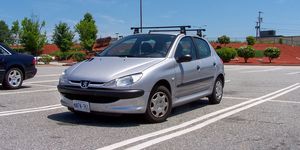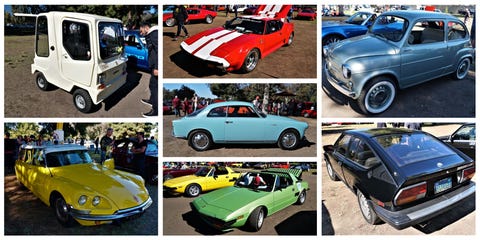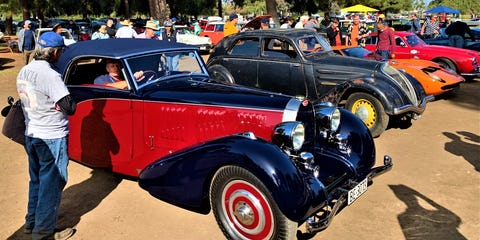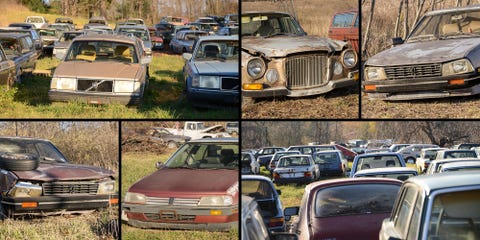Just over 15 years ago it was still possible, with modest effort, to see a Peugeot in those states that at one point had a large enough number of dealers. But that's far from the case these days.
Around 2006, the youngest Peugeots would have been a decade and a half old, so they had become an uncommon sight—perhaps incrementally rarer than other European cars of the 1980s, like Volvos and Saabs. And that period, in the mid 2000s, was perhaps the last time Peugeots could be found on certain US roads without much effort.
But that only held true for areas where there were a lot of Peugeots to begin with. Just like a few other brands, notably Alfa Romeo, the French automaker had a mostly regional presence in the US concentrated in the northeast and pockets of the West Coast.
When Peugeot left the US in 1991 it still had 151 dealers in the country and a staff of 178 at its US headquarters in Lyndhurst, New Jersey. At the time, only 30 of those dealers sold Peugeot and no other marque, with the vast majority being multi-brand dealers.
That regional distribution was uneven: Connecticut and New Jersey had 11 dealers each, New York had 18, while states like Wisconsin and Alaska had one each. A small grouping of dealers stretched from the Bay Area up to Seattle, with 19 dealers in California, two in Oregon and four in Washington, lending the West Coast a sizable presence, artifacts of which can still be found today.
But in terms of saturation, it was hard to beat the trio of New Jersey, New York, and Connecticut.
At the time Peugeot left, the brand still counted 120,000 cars on the road in the US, but the departure of the 505 sedan and wagon had obviously taken its toll. Just the 405 sedan and wagon remained on sale, with their sales numbers failing to make a dent against Japanese cars, with many dealers at the time lamenting their growing presence, especially during lean economic times.
While the vast majority of dealers had other brands to fall back on, typically Volkswagen, Saab, and Volvo, others had to switch to a different brand overnight, including the dealer that sold the wagon above, Reynolds Peugeot of Old Lyme.
This business, founded in 1859, had sold Rover cars in the 1970s but became a Subaru franchise shortly after Peugeot's departure from the US. Now Reynolds does not regularly service Peugeots and hasn't for about a decade—there simply aren't any techs left who had worked on them when they were still relatively new. The same is true for most other former Peugeot dealerships that are still in operation with other brands today, and most technicians weren't even born when Peugeot was still selling cars stateside.
Reynolds had continued to service Peugeots through the 1990s, but by the early 2000s the number of cars on the road had begun to dwindle noticeably. By the end of the 2000s, just about a dozen cars or so remained in regular use within a half-hour drive of the dealership. And around half a dozen originally sold by Reynolds remain in running condition in the area today, by some estimates.
At the height of Peugeot sales—a time period stretching roughly from 1981 through 1986—the brand sold about 15,000 cars a year, on average, with New York City even experimenting with diesel 504 and 505 sedans as taxis. During the 1980s the brand also had some variety of models, including the 504 and 505 sedans and wagons, the 604 sedan, and the 405 sedan and wagon duo that arrived at the tail end of the decade. It wasn't quite as varied as Volvo's lineup, but it was close.
By the early 1990s these numbers plummeted to below 5000 cars sold in 1990, and below 2500 in its last year stateside.
The big picture lesson, if any, is that Peugeot had been able to cultivate a loyal following stretching from the late 1960s through the end of the 1980s in the northeast and the West Coast, but was unable to compete favorably with less expensive Japanese cars, or more luxurious German and Swedish cars by the end of the 1980s, and had in effect become wedged in that middle ground with a shrinking and aging lineup. The debut of the 405 sedan and wagon—pricey for their size and features—did not manage to attract those buyers who had bought the 505 a few years prior and had now been shopping for cars. Just a few hundred now remain in running condition in the US.
Even though Peugeot left the US in 1991, its parent company PSA Group merged with Fiat Chrysler Automobiles two years ago to form Stellantis as a global automaker.
Have you seen Peugeot 505s on the road in the past year or so? Let us know in the comments below.



















